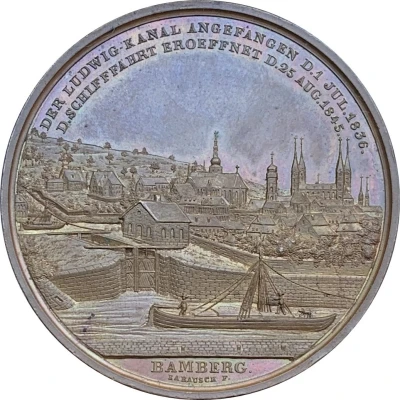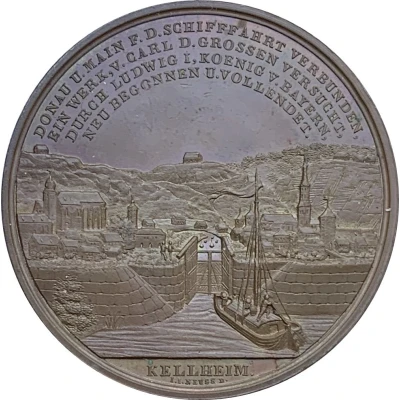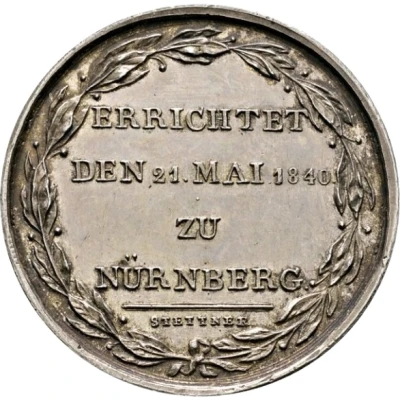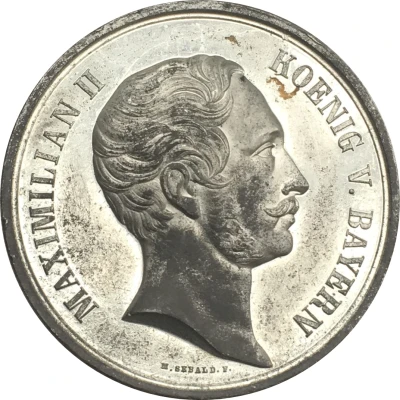Reverse
City and landscape view with the new canal.
Script: Latin
Lettering:
DONAU U.MAIN F. D. SCHIFFFAHRT VERBUNDEN, // EIN WERK,V. CARL D. GROSSEN VERSUCHT, // DURCH LUDWIG I, KOENIG V. BAYERN, // NEU BEGONNEN U. VOLLENDET.
KELLHEIM // I. I. NEUSS D.
Engraver: Johann Jakob Neuss
Edge
Plain
Comment
The Ludwig Canal (or King Ludwig Canal, to be more precise) is a 178 km-long, small-gauge canal in Germany (it only allows the transit of 32 m × 4.50 m vessels), linking the Danube from Kelheim to the Main at Bamberg, serving Nuremberg, and thus ultimately linking the Rhine and the Danube. It was built between 1836 and 1842 on the basis of a subscription to a joint-stock company, but did not enter service until 1845. Following the destruction of the Second World War and the decline in traffic, the canal was abandoned in 1950 and partly filled in. A few sections are still in use today as part of the Bavarian state heritage.
(Source : www.wikipedia.org)This is an automatic translation. The original text is:
Le canal Ludwig (ou plus exactement canal du roi Ludwig) est un canal d'Allemagne à petit gabarit (il ne permet que le transit de navires de 32 m × 4,50 m) de 178 km de longueur, reliant le Danube depuis Kelheim au Main à hauteur de Bamberg, en desservant Nuremberg, donc finalement reliant le Rhin et le Danube. Il fut construit entre 1836 et 1842 sur la base d'une souscription à une société par actions, mais n'entra véritablement en service qu'en 1845. Le canal a été abandonné définitivement en 1950 suite aux destructions de la Deuxième Guerre mondiale et la baisse des transits, et en partie remblayé. Quelques sections sont encore aujourd'hui maintenues en eau à titre patrimonial par le Land de Bavière. (Source : www.wikipedia.org)






